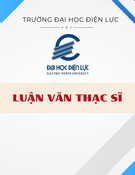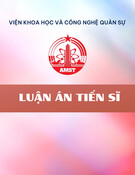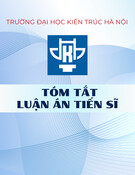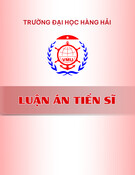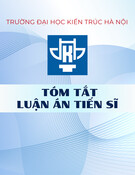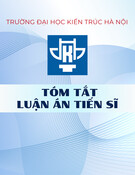
Durability of Piezoelectric Wafer Active Sensors (PWAS) for
Health Monitoring of Composite Structures
A thesis submitted in fulfilment of the requirements for the degree of
Master of Engineering (Aerospace Engineering)
Geoffrey Thomas
B. Eng (Aero) (Hon 1st Class) (RMIT University)
School of Aerospace Mechanical and Manufacturing Engineering
College of Science Engineering and Health
RMIT University
April 2016

ii
Declaration
I certify that except where due acknowledgement has been made, the work is that of the
author alone; the work has not been submitted previously, in whole or in part, to qualify for
any other academic award; the content of the thesis is the result of work which has been
carried out since the official commencement date of the approved research program; any
editorial work, paid or unpaid, carried out by a third party is acknowledged; and, ethics
procedures and guidelines have been followed.
_____________________
Geoffrey Richard Thomas
10 April 2016

iii
Acknowledgments
This thesis would not have been possible without the support from my family, friends and
work colleagues. It was a long and demanding process, especially since transitioning to full-
time employment, and without the assistance I have received it is unlikely I would have
been able to finish.
I would firstly like to thank my primary supervisor Dr Akbar Katibi for his help throughout
the entire duration of this Master's degree. His guidance and technical advice helped me to
expand my knowledge and enable me to overcome the many challenges that I faced. I
would also like to thank him for his time and effort during the never ending review process.
Next, I would like to thank Professor Adrian Mouritz, my secondary supervisor, and the
entire RMIT Composites Team for providing valuable feedback and helping to inspire me to
achieve my potential. I am also extremely grateful for their time and help they provided me
during the endless hours manufacturing and testing.
This project would also not been possible without the RMIT lab staff, in particular, Peter
Tkatchyk and Bob Ryan. Their technical expertise and willingness to provide advice, no
matter how trivial, was greatly appreciated.
Finally, I would like to recognise my family and friends whom without I wouldn't be where I
am today. I am grateful for the support during my entire academic education and while I
may not have appreciated it at the time, they provided me with the push that I needed to
finish. I am also extremely thankful for the ability to come home to a hot meal and relax
after a long day, which wouldn't have been possible without my supportive parents.

Table of Contents
Declaration ................................................................................................................................. ii
Acknowledgments..................................................................................................................... iii
Table of Contents ...................................................................................................................... iv
List of Figures .......................................................................................................................... viii
List of Tables ............................................................................................................................. xi
Acronyms ................................................................................................................................. xii
Abstract ................................................................................................................................... xiii
1. Introduction ....................................................................................................................... 1
1.1. Background and Rationale for the Research ............................................................... 1
1.1.1. Ageing aircrafts .................................................................................................... 1
1.1.2. Composite materials ............................................................................................ 2
1.1.3. Non-destructive testing ....................................................................................... 3
1.1.4. Structural health monitoring ............................................................................... 5
1.1.5. Types of SHM systems ......................................................................................... 7
1.1.6. Regulations and certification of SHM systems .................................................... 8
1.2. Research Aims and Objectives .................................................................................. 10
1.3. Overall Structure of the Thesis .................................................................................. 11
2. Review of PWAS Theory and Literature ........................................................................... 12
2.1. Introduction............................................................................................................... 12
2.2. Piezoelectric Effect .................................................................................................... 12
2.3. Piezoelectric Properties and Material Selection ....................................................... 15
2.3.1. Electromechanical coupling coefficient ............................................................. 15
2.3.2. Dielectric constant ............................................................................................. 15
2.3.3. Piezoelectric constants ...................................................................................... 16

v
2.3.4. Frequency constant ........................................................................................... 16
2.4. Damage Detection Using PWAS ................................................................................ 17
2.4.1. Propagating Lamb waves ................................................................................... 17
2.4.2. Electromechanical impedance method ............................................................. 19
2.5. PWAS Integration ...................................................................................................... 26
2.5.1. Surface bonded .................................................................................................. 26
2.5.2. Embedded .......................................................................................................... 27
2.6. Durability of PWAS .................................................................................................... 30
2.6.1. Environmental effects ........................................................................................ 30
2.6.2. Mechanical effect .............................................................................................. 34
2.7. Numerical Modelling of Piezoelectric Materials ....................................................... 37
2.8. Conclusions................................................................................................................ 39
3. Manufacturing and Damage Identification ...................................................................... 41
3.1. Introduction............................................................................................................... 41
3.2. Manufacturing Test Specimens ................................................................................. 41
3.2.1. Materials ............................................................................................................ 41
3.2.2. Bonded PWAS specimens .................................................................................. 44
3.2.3. Embedded PWAS specimens ............................................................................. 46
3.3. Damage Identification ............................................................................................... 50
3.3.1. Data acquisition ................................................................................................. 50
3.3.2. PWAS performance ............................................................................................ 51
3.4. Conclusion ................................................................................................................. 54
4. Influence of Static and Fatigue Loading on PWAS ........................................................... 55
4.1. Introduction............................................................................................................... 55
4.2. Testing Procedure ..................................................................................................... 55

